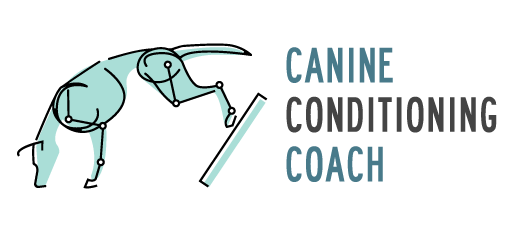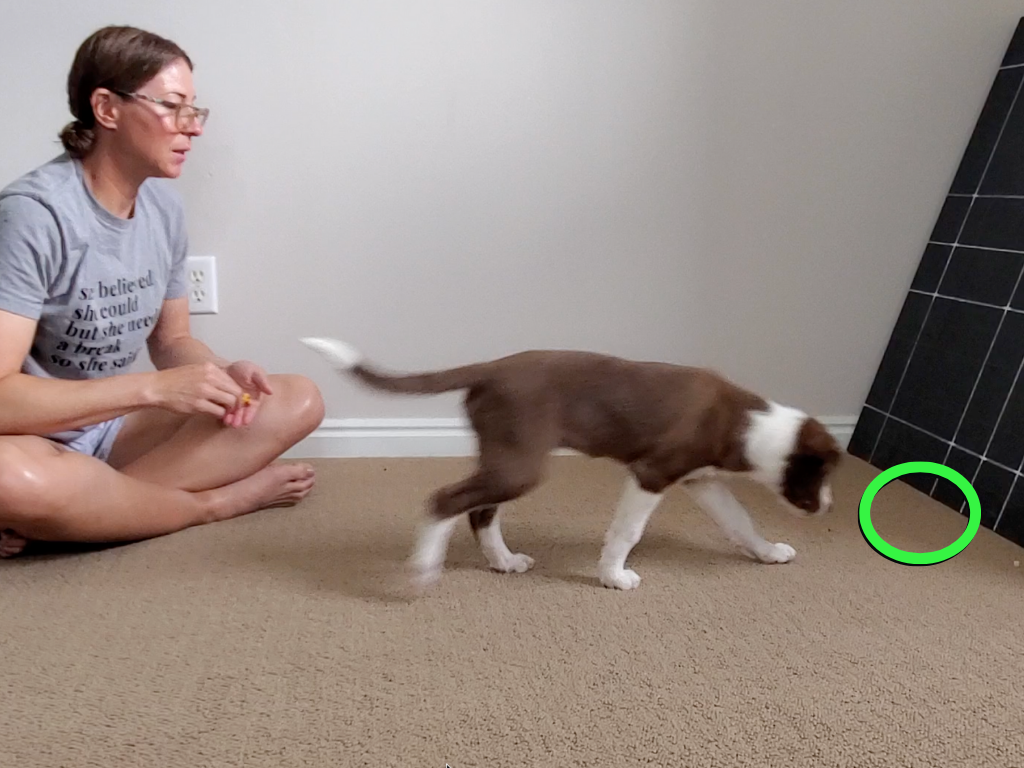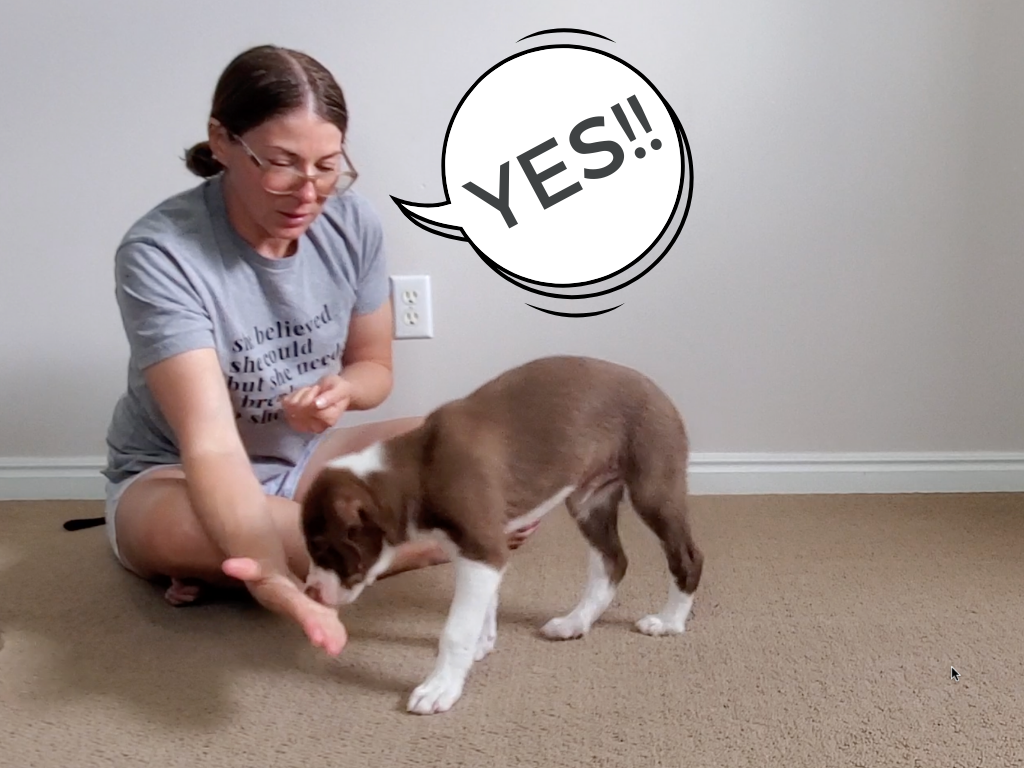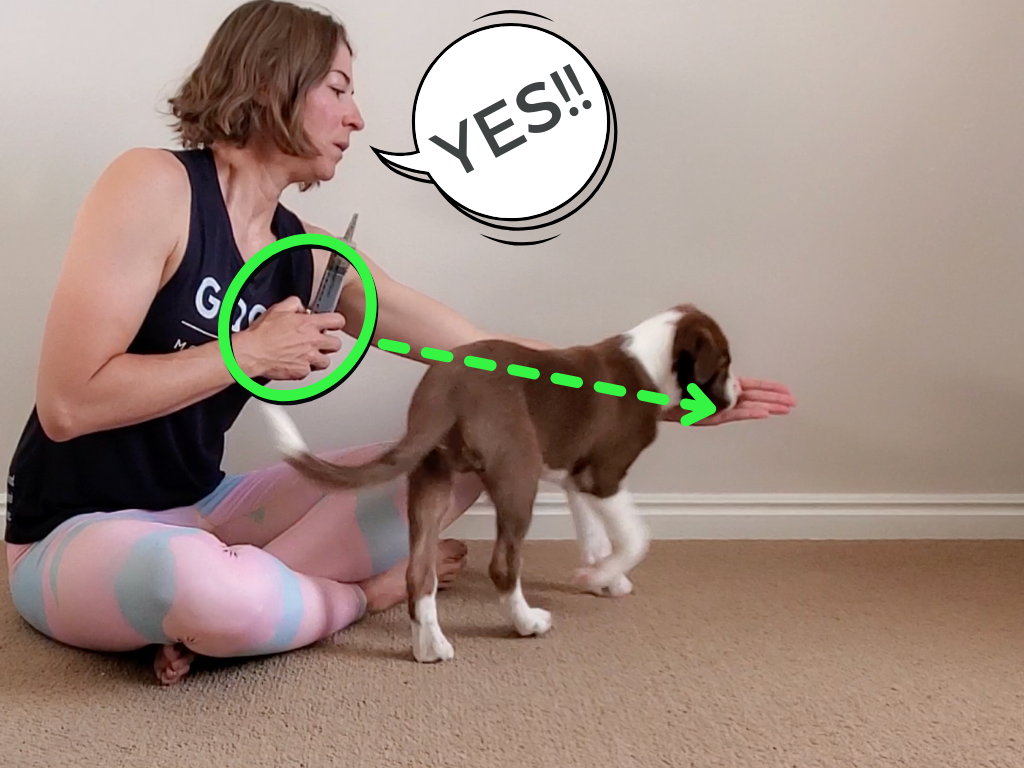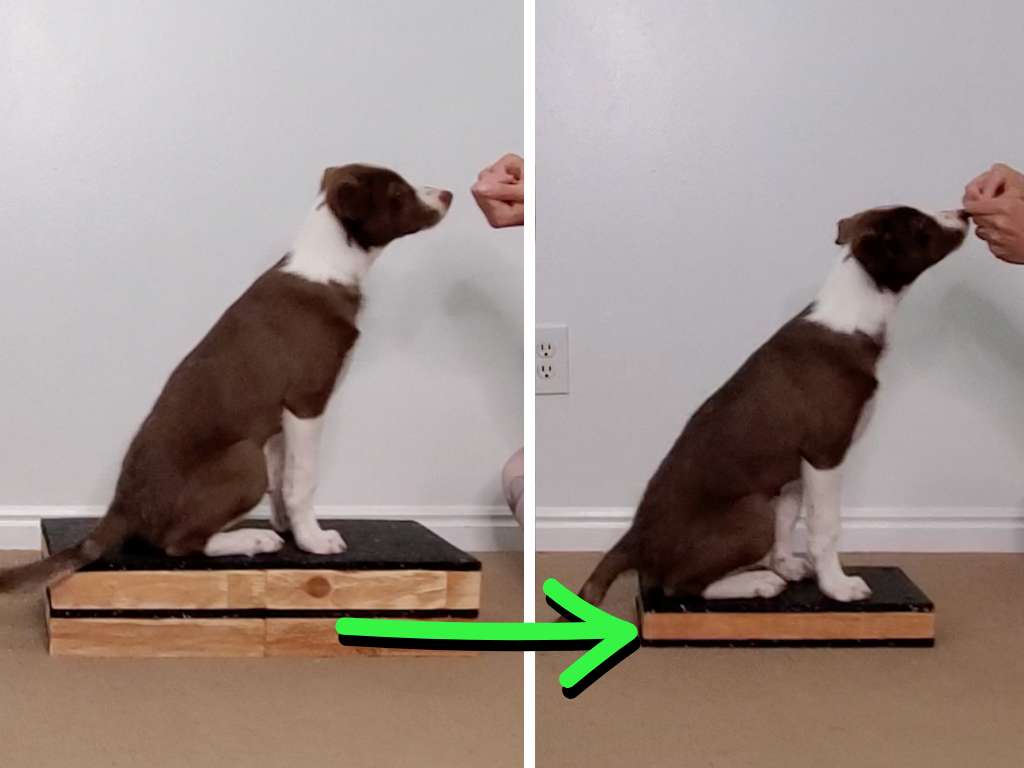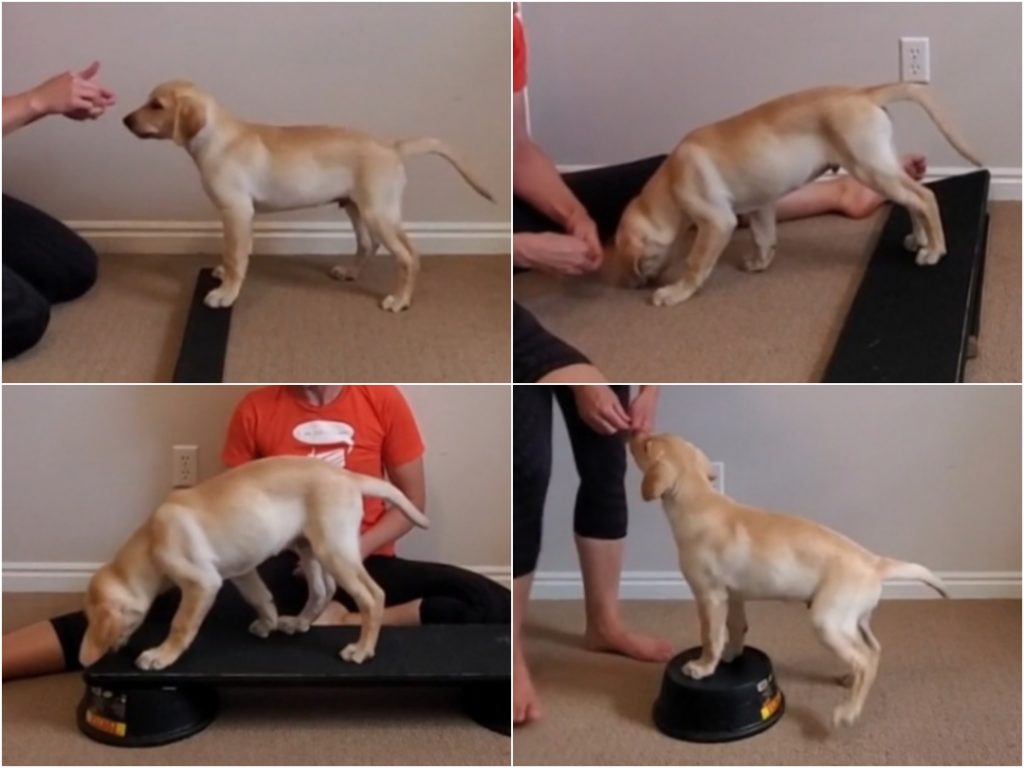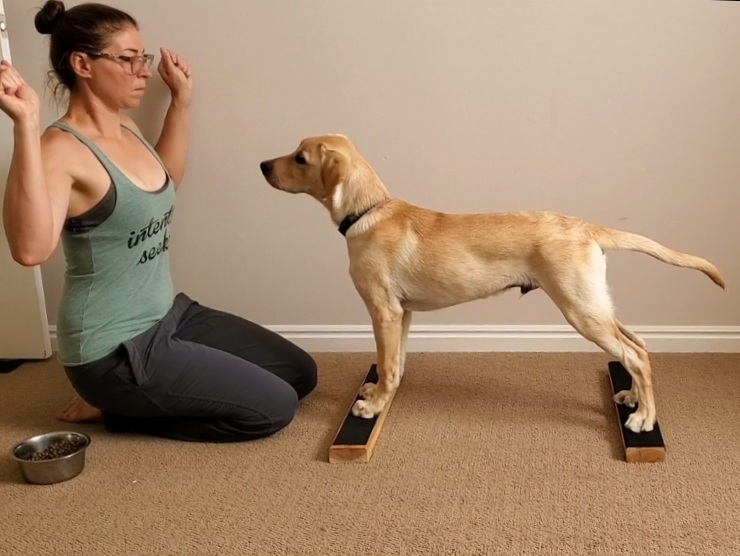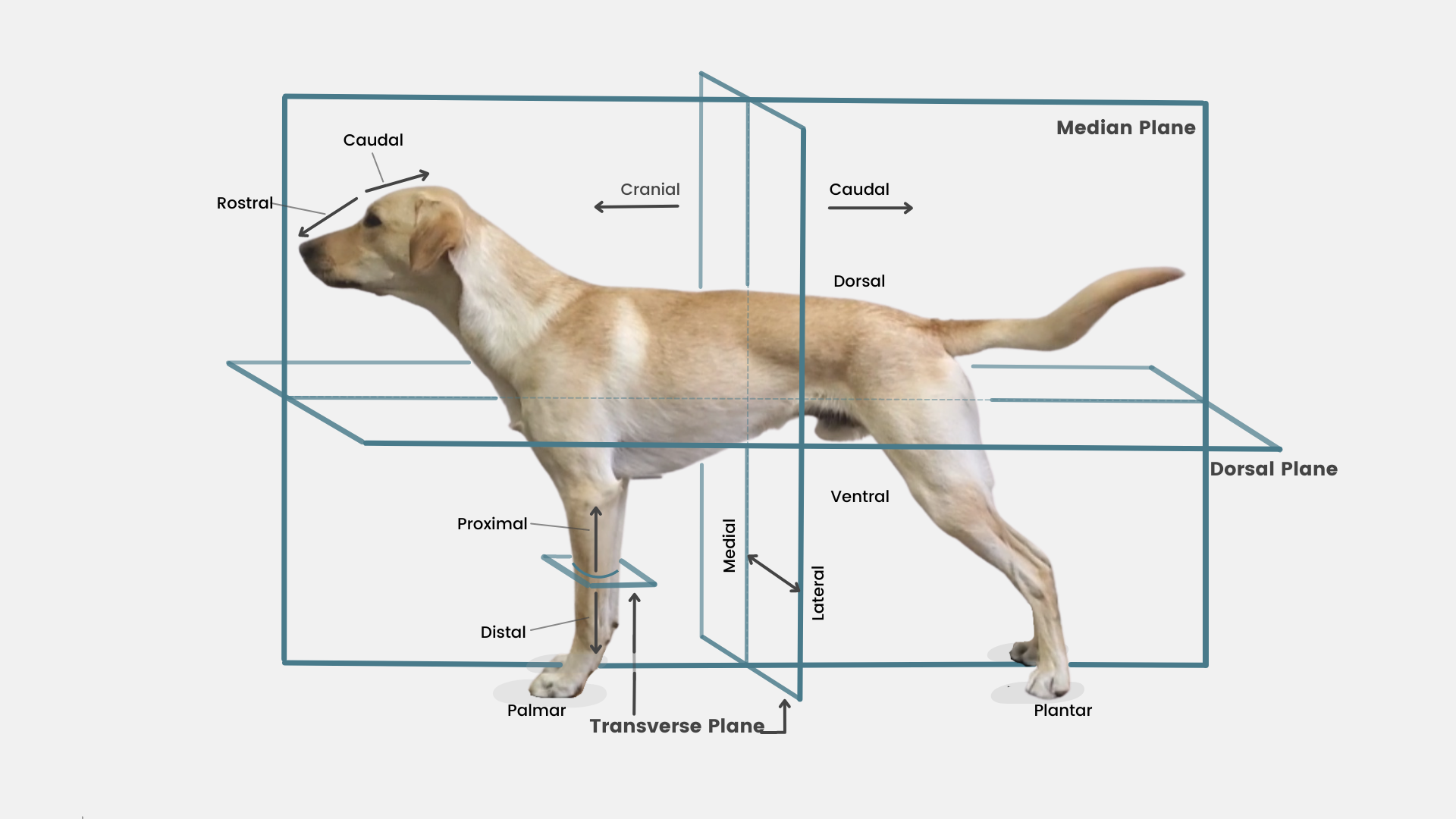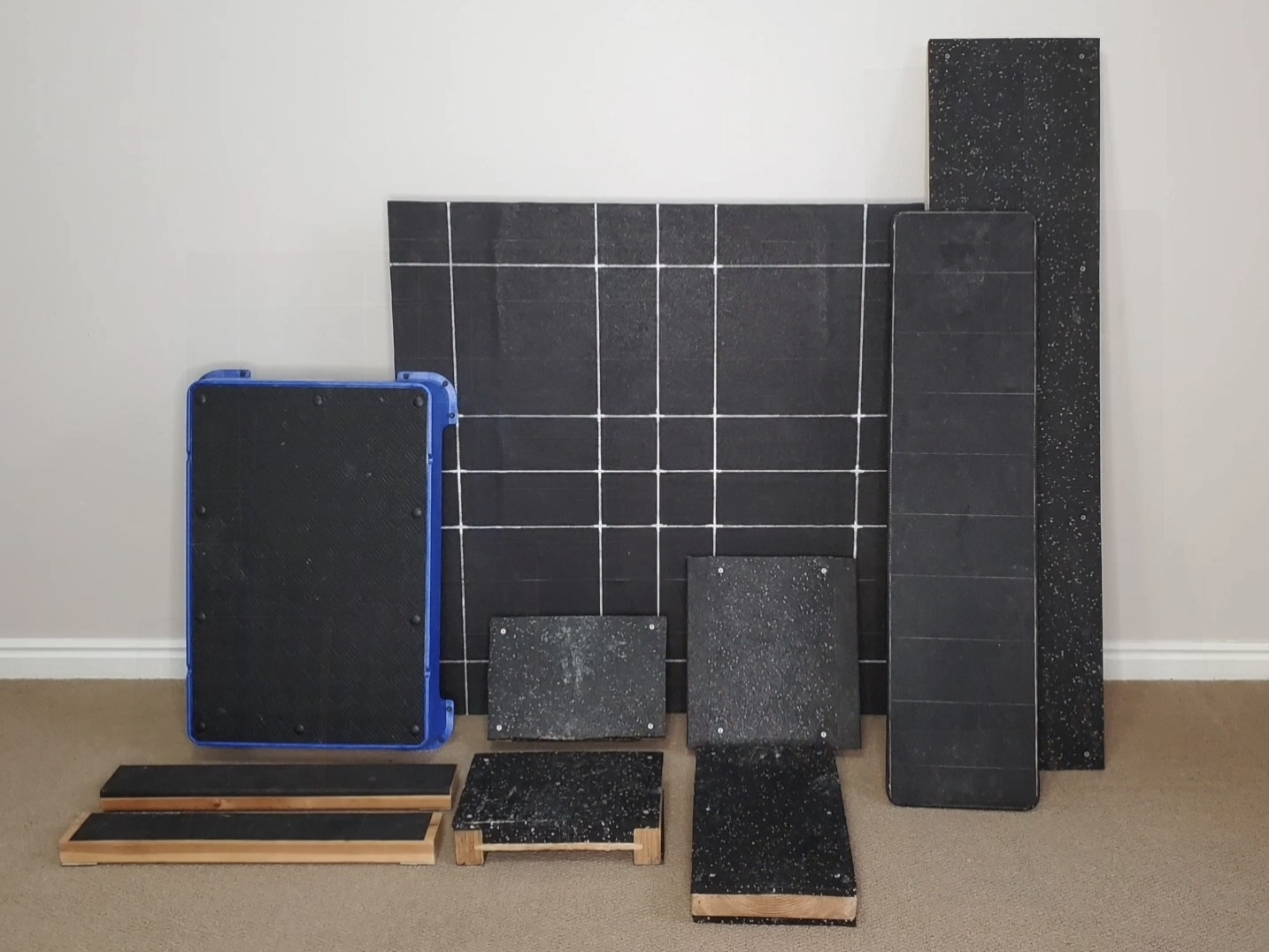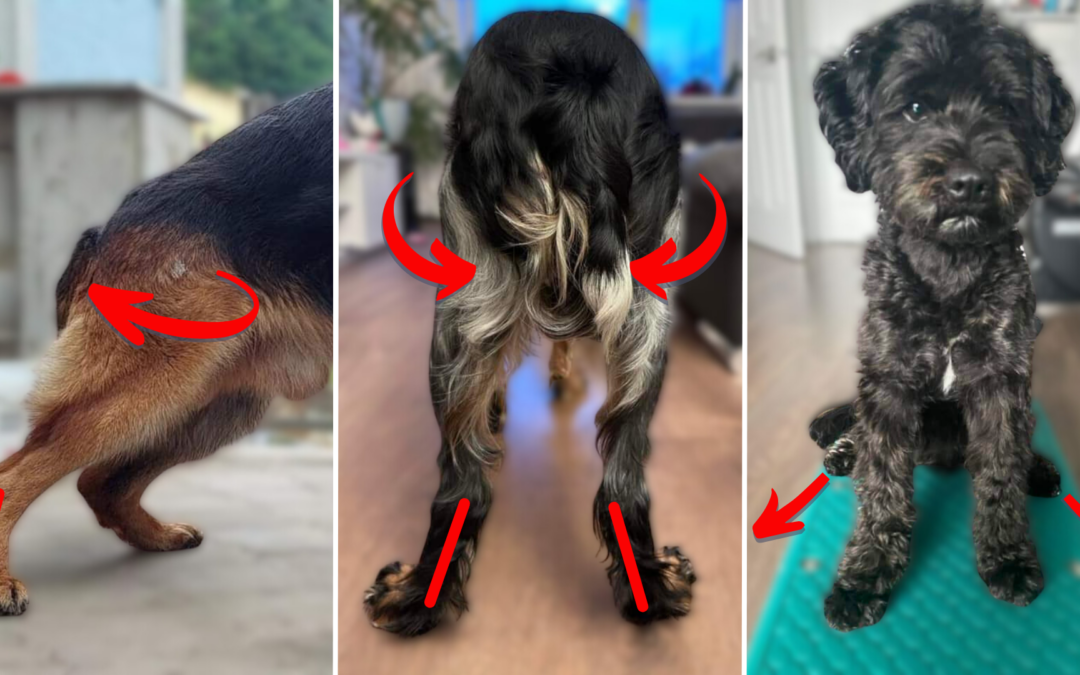Purpose: Introducing new exercises can be confusing for some dogs, leading to frustration for both dog and handler. To avoid that, I use a consistent, predictable reward strategy called a Training Loop. This provides context. So the dog knows when the exercise starts, how to earn the reward, and when the exercise ends. Because the process is consistent, it can be used to teach a variety of behaviors, all while avoiding frustration, stressing up, or shutting down.
I use a 4 Part Training Loop for the majority of my conditioning exercises. This includes…
1. Reset Cookie: Which begins the loop and moves the dog into position.
2. Placement of Reward + Handler Motion: To set the line, and refine the dog’s direction and speed.
3. Stopper Cookie: To stop the dog’s forward motion and reward the desired behavior
4. Off Cookie: To help the dog exit the props safely.
Equipment: Various.
NOTE: These Pre Foundation exercises are really training skills all future exercises are built upon. If your pup is struggling with arousal levels increasing / decreasing, frustration, giving up, or a general lack of understanding, incorporating these Pre Foundation skills is sure to help!!
Targets: This video shows how a Training Loop is used over a variety of exercises. And even with my adult / seasoned dogs, I use this strategy to help moderate arousal levels in known exercises, and also while teaching brand new exercises. This strategy is particularly helpful when the dog seems to be challenged or “isn’t getting it”. Using the Reset Cookie is a great way to help “unstick” the dog (mentally, physically, or both), and help them try again.
Watchpoints:
1. The Training Loop can be modified as needed for the exercise you are implementing with your dog, and the specifics of the prop setup. Stopper Cookies can be added or removed as necessary. BUT please don’t be stingy with your rewards.
2. If your pup is not executing an exercise correctly (as demonstrated in the video) a Reset Cookie is a much better option than allowing your pup to founder and fail.
3. After reward history is built in, and the dog understands the movement pattern we want, THEN it’s ok to reduce your assistance and see of they can be correct on their own. But it’s better to leave the “Training Wheels” on too long than to take them off too soon, and risk frustration. If my dog is not successful, or attempting to be successful in 3 seconds, I will reset.
4. If the dog is following the Training Loop, but is still not being successful (needing multiple resets without improvement), it’s likely there’s a weakness in the underlying skills, the training plan is too difficult, or the exercise is too complex. Try to break things down, and see where the behavior can be split into smaller skills, vs lumping them together. You can see an example of this in the Introducing Platforms video.
